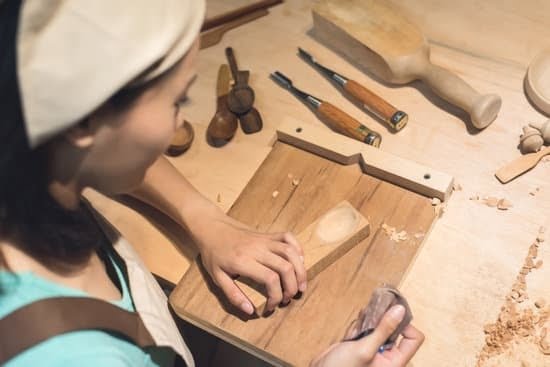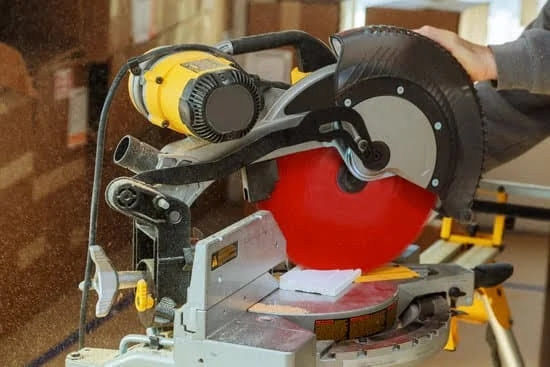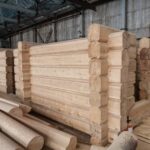Introduction to Japanese Woodworking
The history of Japanese woodworking dates back to the 8th century and its influence can be found in other forms of woodworking from Europe and China. Characterized by its use of sophisticated tools, precise joinery techniques, and unique aesthetic qualities, Japanese woodworking has developed into a respected tradition over the centuries.
There are a variety of techniques still being used in modern Japanese woodworking, including traditional joinery techniques like mortise-and-tenon joints and dovetails. Other methods involve the use of a unique tool called kanna, which is a type of plane used for carving and shaping pieces. Finishing techniques like oiling or waxing are also part of the practice, as is the incorporation of decorative inlays such as metal or ivory.
In comparison with other forms of woodworking, what sets Japanese woodworking apart is its focus on craftsmanship. By creating detailed works through delicate manual labor, skilled craftsmen can slowly shape each piece into small works of art ” making them truly special.
Key Elements of Japanese Woodworking
Japanese woodworking is a centuries-old craft based on skill, traditional Japanese tools and technique. Unlike other styles of woodworking, Japanese woodworking relies heavily on hand tools, such as plane blades, chisels and saws. The use of high quality materials is essential to the process – hardwoods are preferred for furniture and soft woods for boxes and smaller pieces. Also important is the use of the correct type of glue; either rice paste or fish glue.
The primary elements in Japanese woodworking involve careful planning and joinery. This means that all pieces must be precisely cut before assembly to ensure an exact fit once they are joined. Both mortise-and-tenon joints and different types of dovetails are commonly used in Japan to keep projects stable and improve their structural strength. Smoothness – a preferred goal among many Japanese carpenters – can be achieved using a variety of methods such as chiseling, planing or sanding down workpieces with washi paper (a special type of paper made from processed bark).
Finally, in the finishing stages of a piece, natural waxes or oils sometimes are applied to bring out the beauty of the grain pattern in the wood. Other techniques involve laying small strips of bamboo horizontally across crafts so that it’s exposed along both sides for a distinctly Japanese aesthetic called kaneshige ” where thin strips form patterns similar to latticework.
Practice and Equipment
Japanese woodworking requires hand-tools and the use of traditional Japanese joinery techniques. Common tools used in Japanese woodworking include hand saws (dozuki, ryoba, and flush cut saws) chisels (mortise and paring, steel tempered chisels), and planes (kanna, kataba, and kiridashi). You will also need a variety of clamps to assemble joints securely. The most convenient type of clamps are the trigger clamp style. Other helpful supplies include marking knives to help mark out joints, sandpaper such as nagura paper for creating fine shavings and grinding stones for maintaining blades. Japanese carpenters also rely on efficient layout techniques such as trammel points for measurement accuracy. Safety is paramount in any type of woodworking, whether it be Japanese or not – always wear safety glasses when cutting with a power tool or hammering nails into place. Be sure to read the instructions provided with each tool before attempting to use it!
Projects to Start With
1. Making a Bento Box: A bento box is a traditional Japanese lunchbox that consists of several individual compartments, and is often decorated with intricate, organic designs. This project introduces basic woodworking techniques such as cutting, sanding, measuring, joining, and assembly.
2. Crafting a Sushi Serving Tray: A sushi serving tray is one of the most quintessential pieces of Japanese craftsmanship. With an emphasis on precision cutting and finish work, this project will teach you the basics for building unique pieces with traditional joinery methods like the miter joint and dovetail joint.
3. Carving a Tsuka Handle: A tsuka handle is the handle attached to Japanese swords (katana). It typically showcases intricate carvings, making it an ideal project for learning basic carving techniques using chisels and gouges. Once finished sanding and polishing are important processes to bring out the beauty of the wood grain in your piece.
4. Building a Tea Table: Tea tables represent one of Japan’s oldest woodworking traditions ” having been used for centuries in tea ceremonies across Japan since ancient times. This project introduces fine joinery skills including lapped dovetails as well as shaping and fitting curved corners which requires skilled hand-cut sawing techniques combined with careful planing and scrapers to produce a comfortable angled rest surface for cup handles.
Expert Tips and Tricks
Experts in Japanese woodworking use certain tools and methods to achieve different effects. They often take a minimalist approach with the use of traditional Japanese hand tools, with simple cuts and joinery that result in sculpturally appealing pieces of furniture. These specialty tools, such as the kanna or plane, hon-sashi or scraper, and ebo-kiri saw facilitate unique types of maneuvers such as angled cuts, beveling edges and chamfering edges that can rarely be replicated with Western woodworking techniques. Traditional woodworking techniques such as dovetailing are replaced with simpler techniques like mortise and tenon joints, which provide an aesthetically pleasing look while still providing strength to the piece. The emphasis is typically on precision and smoothness when creating these types of pieces, requiring patience and skill over mechanical means. To achieve a mirrored finish as traditionally seen in Japanese joinery requires years of practice perfecting various sanding and finishing techniques. In this way Japanese woodworking offers creative ways to bring out the beauty of the materials used while maximizing efficiency in both time and energy.
Finishing Touches
Finishing woodworking projects can be a rewarding, yet daunting task. There are various techniques used to give the project an appealing, polished look and protect it from wear and tear over time. Many of these finishing touches involve varnish, stain, or other materials that impart color, sheen, and protection to the piece.
Varnish is a water based or oil-based protective coating that is applied over the top of the wood for aesthetic purposes. It comes in a variety of colors, tints, and finishes. It is especially effective when applied to raw or unfinished wood surfaces and provides protection from moisture as well as UV rays from direct sunlight. It should be applied by brush or roller in thin coats at least 3-4 times with each coat being allowed to dry before another application.
Staining is a process that can add character, age, and depth to wood surfaces while also adding protection against wear and tear over time. Water-based stains tend to penetrate deeper into the wood grain than oil based varieties but both offer good protection against spills and everyday use. The best way to apply stains is with a brush or cloth in an even coat working along with the grains of the wood using smooth strokes. Allow adequate drying time between coats following label directions exactly before lightly sanding again prior to varnishing.
Finally polishing compounds help smooth out light scratches that may appear after staining or varnishing tasks have been completed on your new Japanese Woodworking project. These large wax pastes contain Carnauba wax which helps fill gaps between grains providing additional shine and luster when buffed well with a cloth wheel free from any abrasive particles within it.
Resources
Books:
-Woodworking in Japan: Bold Designs Meant to Last Forever by Toshio Odate
– Japanese Woodworking Tools: Their Tradition, Spirit, and Use by Yoshio Oishi
-Alice Coleman’s Japanese Lacquer Techniques by Alice Coleman
Magazines:
-Louise Cutler’s Woodworking Magazine
-Finewoodworking Magazine
Websites:
-Ryokumo.com ” A guide to traditional Japanese woodwork
-Japanese Wooden Joinery – Explores the world of traditional Japanese carpentry techniques and joinery methods
-Craftsmen Sean Hellman’s Blog – Exploring the fine craftsmanship of modern and traditional woodwork
Videos:
-Fine Woodwork with Tim Rousseau ” Basic woodworking principles from a master craftsman
-The Art of Japanes Crafts By Lukas Brezak – Step by step instructions on various woodworking techniques from furniture making to joinery.

Hi everyone! I’m a woodworker and blogger, and this is my woodworking blog. In my blog, I share tips and tricks for woodworkers of all skill levels, as well as project ideas that you can try yourself.





